Route 8: Heads up
Length of the route: 1,2 km
Duration: 30 min
When walking through Kroměříž (but this also applies to other towns and places), we concetrate mostly on the obvious attractions that can be noticed at first glance, the objects that are directly offered, beauties that we have directly in our view and almost always at eye level. Sometimes we may lower our eyes to the ground to see what we are stepping on and where we are stepping – whether for our own safety or out of curiosity. But we seldom raise our eyes upwards, rarely stop, tilt our heads, and gaze up. And therefore we often miss interesting things, eye-catching places, impressive and unique details and even huge installations that we take for granted, all these are waiting for us unnoticed… So now please look up with us and get acquainted with the details of some buildings, with interesting facts related to towers, columns and attics of buildings. Here are a few tips from us before you continue on your own. Don’t forget: Heads up!
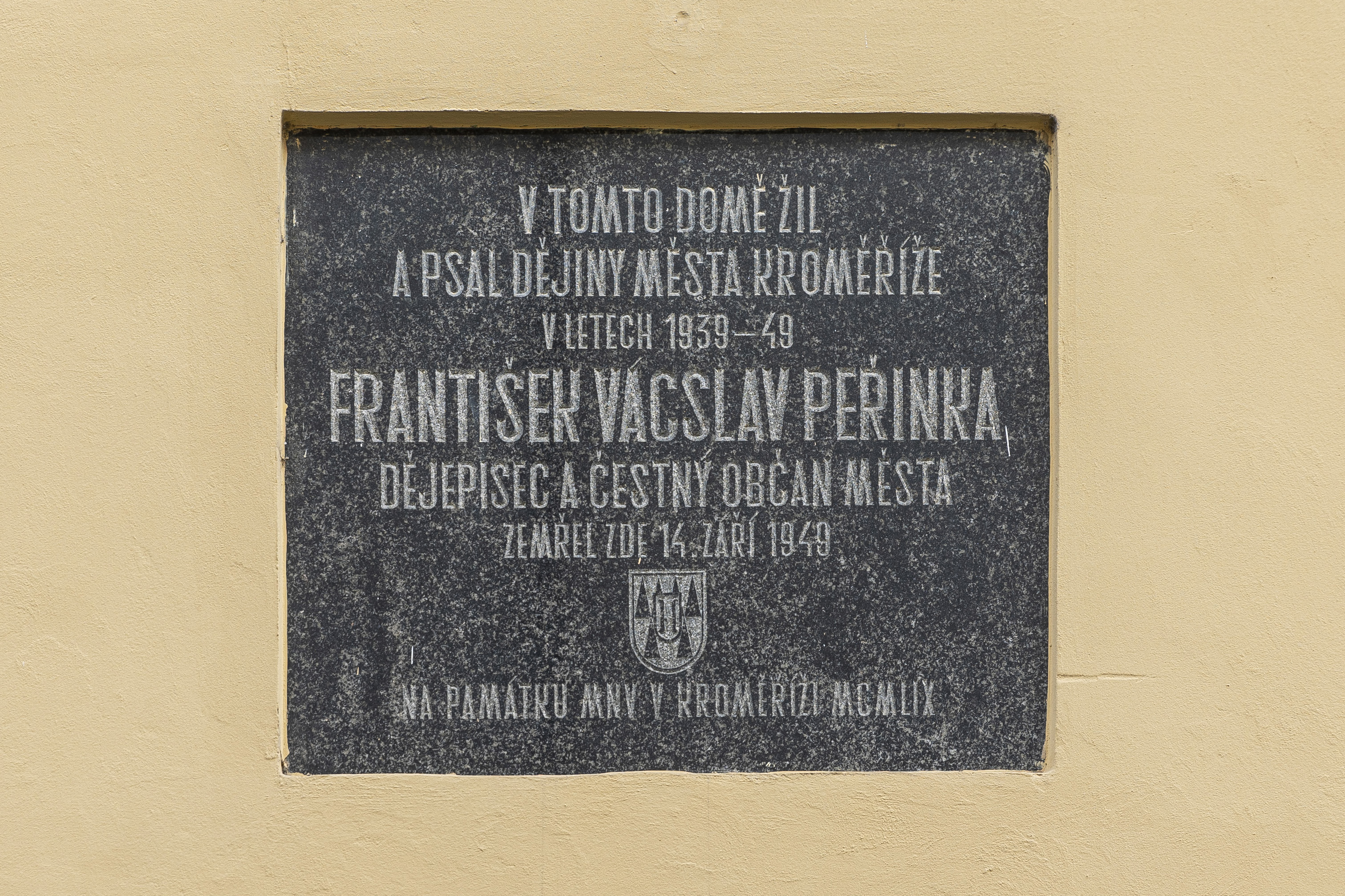
THE MAIN SPOTS OF THE ROUTE:
1 – Commemorative plaque of František Václav Peřinka
Above the entrance to the Radniční sklípek restaurant there is a memorial plaque commemorating the historian František Václav Peřinka. Eventhough he was not a native of Kroměříž, he left for us the monumental history of the town of Kroměříž, which dates back to 1777, precisely to the promotion of the Olomouc bishopric to an archbishopric. Historian F. V. Peřinka was honourably buried in the local town cemetery.
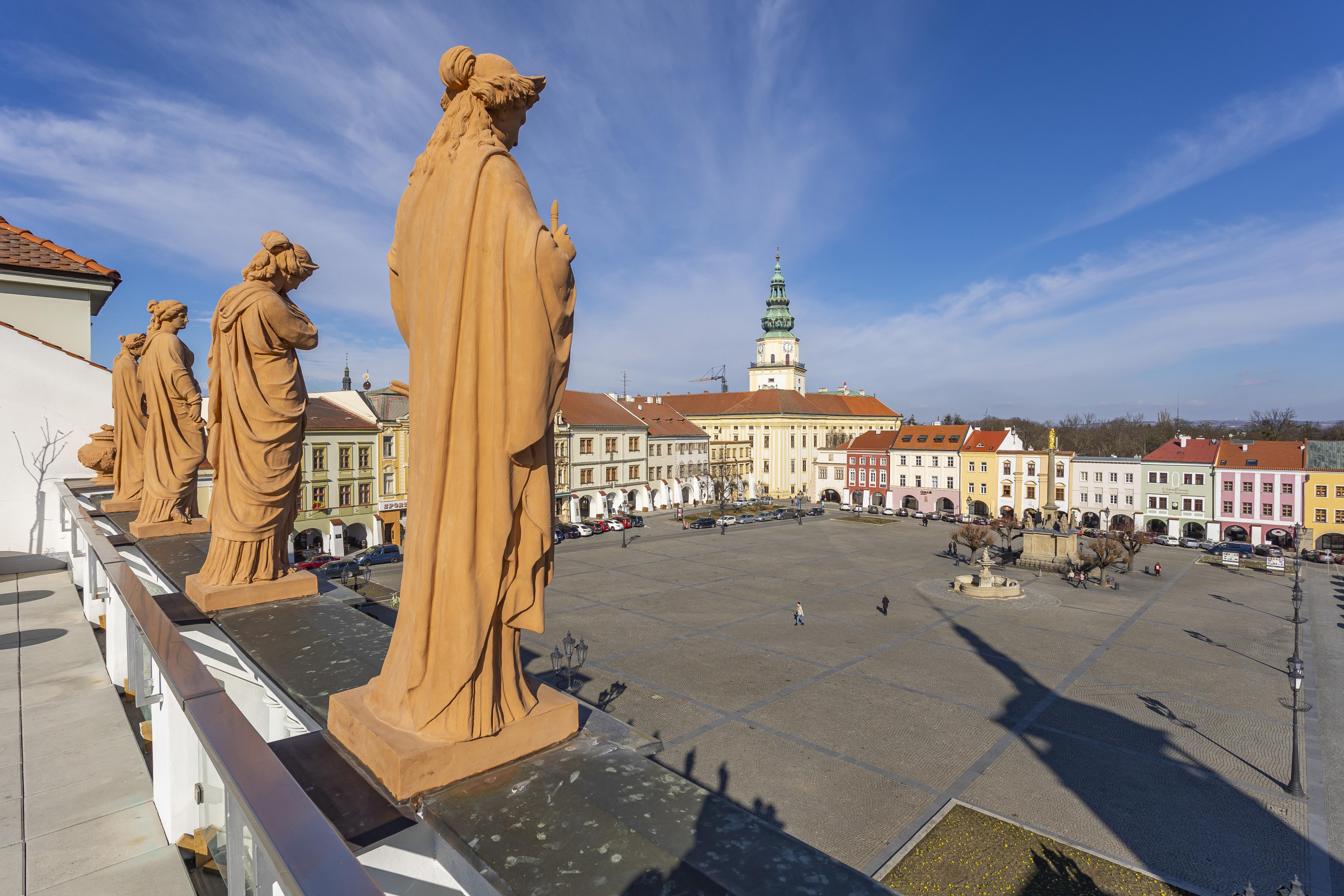
2 – Statues on the terrace of the hotel U Zlatého kohouta
The attic of house No. 20 on the corner of the Great Square and Kovářská Street – today the Hotel U Zlatého kohouta – is decorated with neoclassical, recently restored sculptures of Painting, Architecture, Sculpture and Music. From the terrace, which is lined by these four statues and which is open to the public, there is an amazing view of the entire square and the wide surroundings of the city. Above the pillar of the house on the corner facing Kovářská Street there is the coat-of-arms of Cardinal Franz von Dietrichstein.
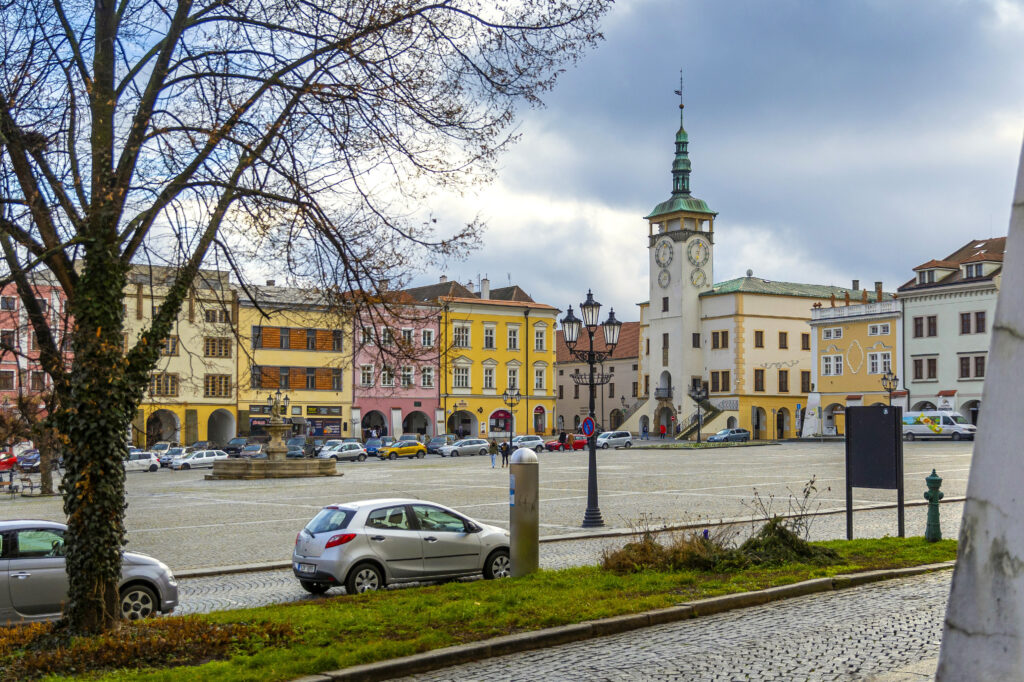
3 – Town Hall Tower and atypical two-face clock
The atypical feature of the forty-meter four-sided tower of the Renaissance town hall, in which the watchman stayed until the 1860s, is a two-face clock located on all four sides. The upper dial shows the hours, the lower shows the minutes. The clocks are are original, but on postcards from the beginning of the last century we can see a classic dial. Similarly, in the middle of the 19th century, the staircase of the Tower disappeared, it was restored in the 1960s of. The originally one-floor building was supplemented by another floor in the middle of the 19th century.
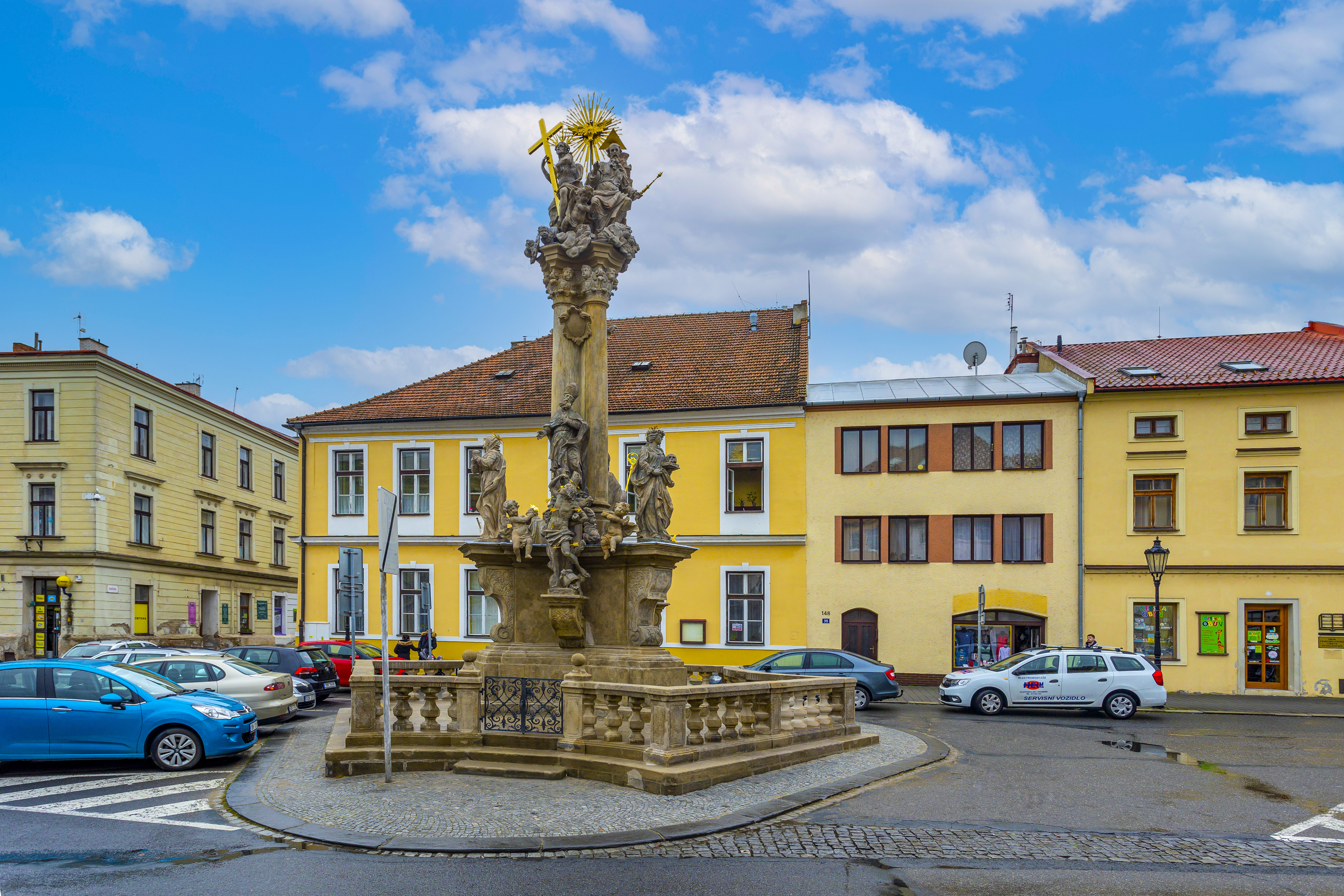
4 – Holy Trinity Column
As an expression of gratitude and celebration of overcoming the last plague epidemic in Kroměříž in 1716, the Holy Trinity Plague Column was created on Rieger Square. The author of the statues was Jan Václav Sturmer. In addition to the statues of Jesus with the cross, Holy Father with a triangle above his head as a symbol of the triunity and a dove symbolizing the Holy Spirit, we can easily identify one of the most famous fighters against the plague and at the same time the patron saint of archers, St. Sebastian, whose body is pierced with golden arrows.
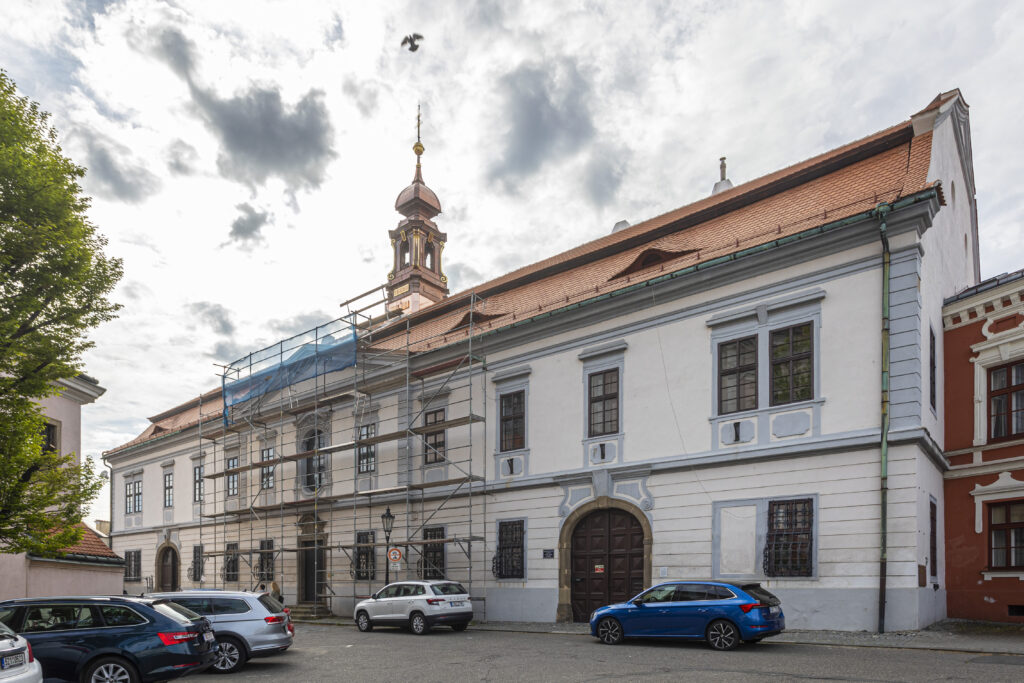
5 – Chapel of St. John of Nepomuk
A careful look at the Emeritus House (No. 150) on Rieger Square reveals the tower of the Chapel of St. John of Nepomuk. This “hidden” chapel is part of the Emeritus House.It is possible to enter it on the ground floor of the house through a portal. The chapel inside spreads over two floors and is closed by a high flat vault. The vault is decorated with wall painting that depicts the scene of Jan Sarkander’s celebration.
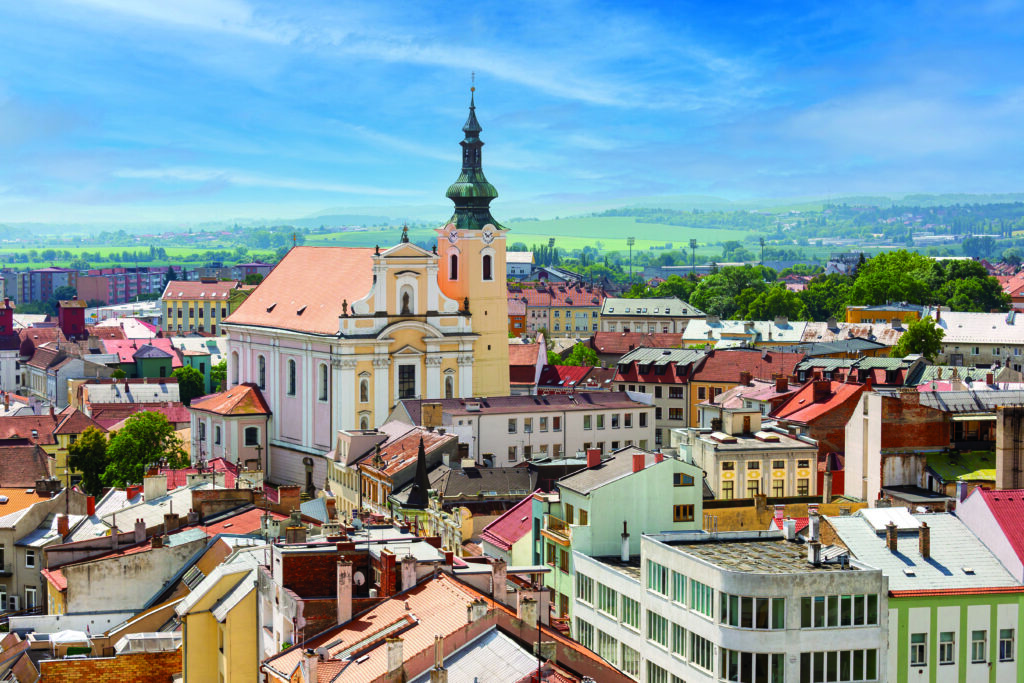
6 – Tower of the Church of the Assumption of the Virgin Mary
The tower of the parish church of the Assumption of the Virgin Mary, whose statue is located in the niche of the façade of the church, has at first glance the same Baroque appearance as the whole church, but at second glance we can notice that its ground plan is not parallel with the main building. This is due to the fact that the tower has medieval foundations and remained standing even after the demolition of the original temple. On the fifth of May 1945, Josef Mlčák was shot when he tried to hang a flag from the tower window as a celebration of victory. There is a memorial plaque displayed on the church wall, dedicated to his memory.
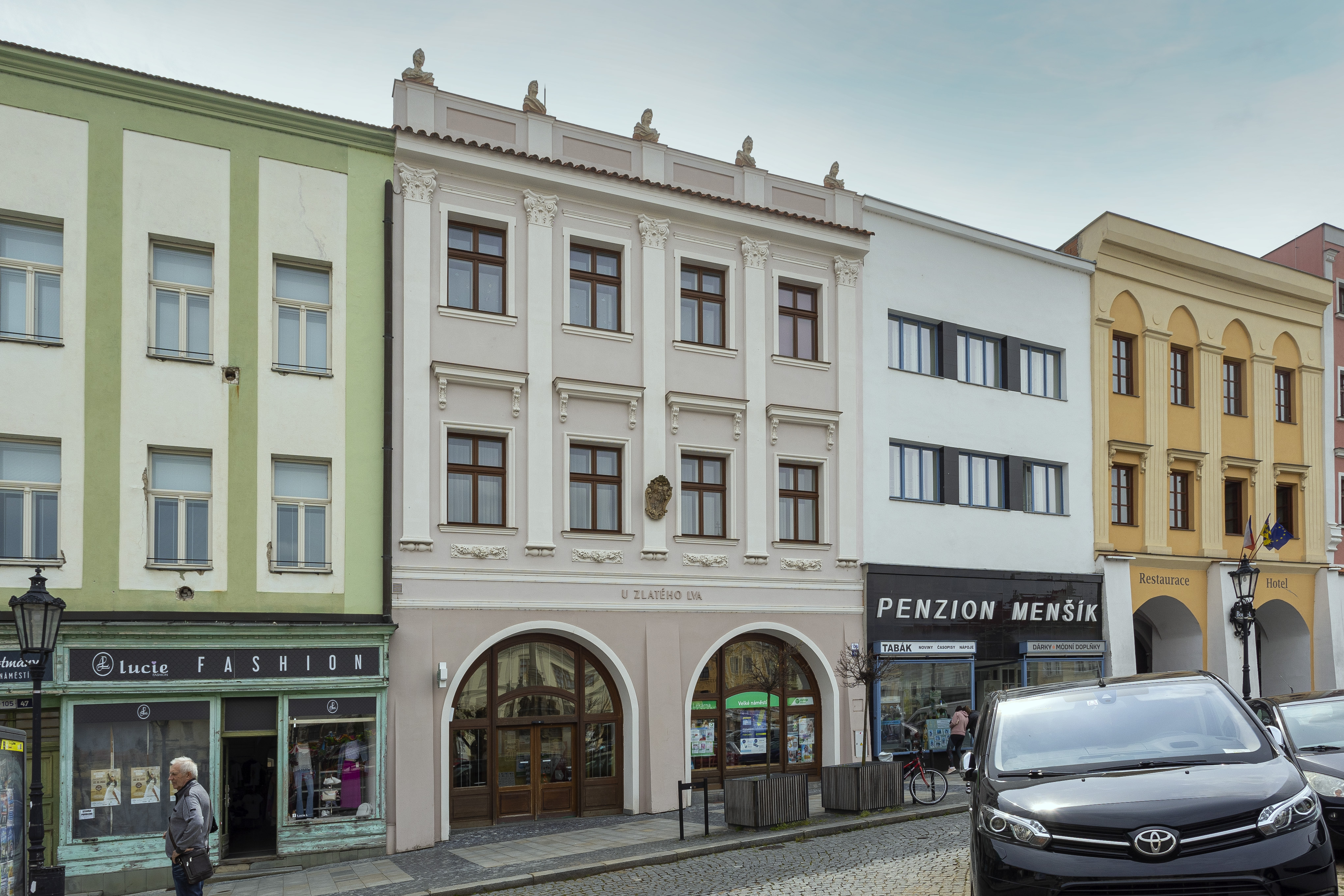
7 – Busts on the attic of the house At the Golden Lion
One of the most impressive houses on the Great Square at the Golden Lion (No. 106) is decorated on the upper attic with five busts of ancient emperors. These were created in the 18th century by the Kroměříž sculptor František Ondřej Hirnle. Furthermore, Hirnle is the author of the tombstone of the Olomouc bishop Leopold Egkh in the Church of St. Maurice and also the decoration of the Manx Hall in the Archbishop’s Castle.
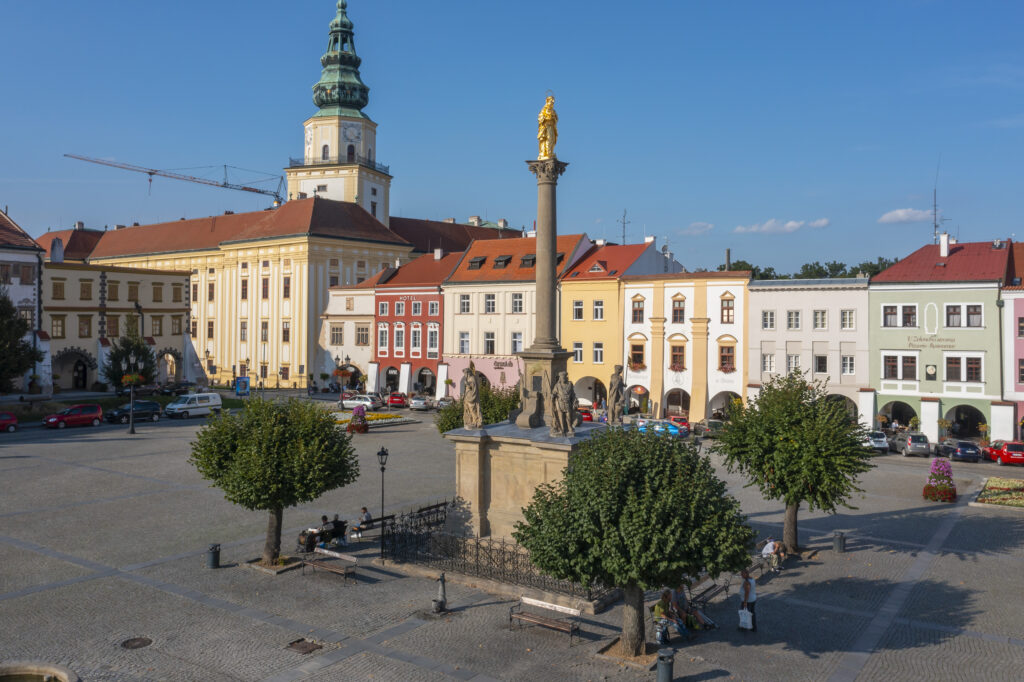
8 – Marian column with a statue of the Virgin Mary
The Marian column on the Great Square was created as a reaction to the plague epidemic in 1680. The author of the building was the bishop’s architect Giovanni Pietro Tencalla, the sculptures were created by the Zürn brothers. These include the statue of the Virgin Mary with baby Jesus standing on top of a column and around them there are four saints on a pedestal – Florian as the patron of the fight against the plague, Wenceslas as the prince of the Czech lands and patron of the episcopal church in Olomouc, Moritz as the patron of the collegiate church in Kroměříž and Roch as a symbol of the fight against the plague epidemic.
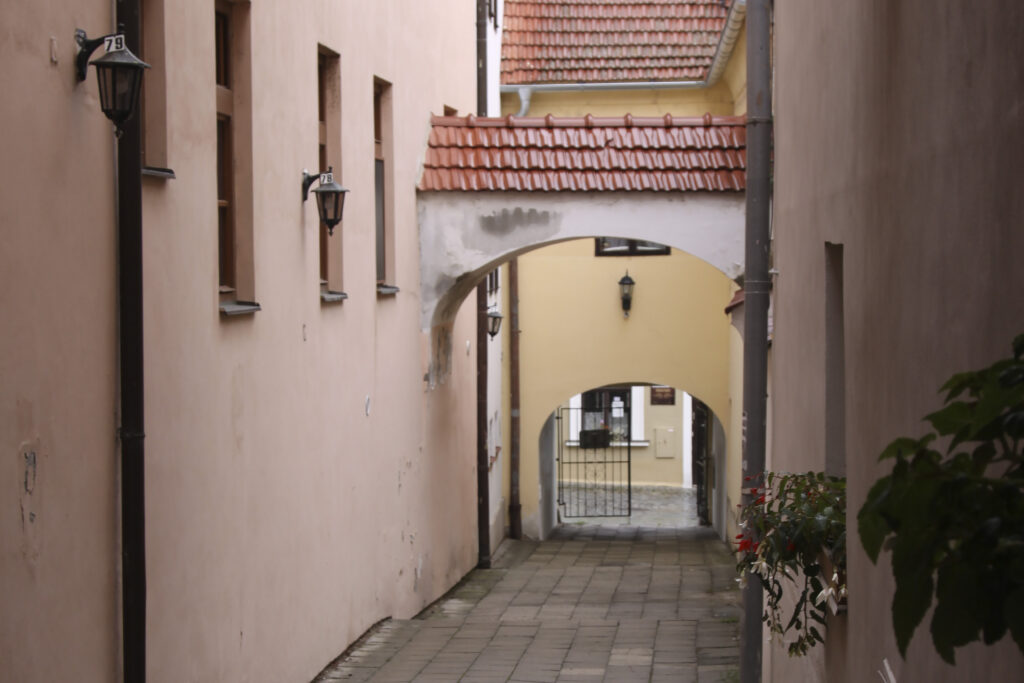
9 – Prampouchy in Lennon Lane
Lennon Lane is the connection between the Great Square and Ztracená Street. At the top of the square and in Ztracená Street, the entrance to this Lane is formed by vaulted passages, and the walls of the opposite houses along the Lane are joined by arches – so-called “prampouchy”. Its origin is not very clearly documented – it may have originated in the 13th century as a shortcut between the square and the northeastern fortifications, but it may have been created in the late Middle Ages as a “anti-fire” lane.
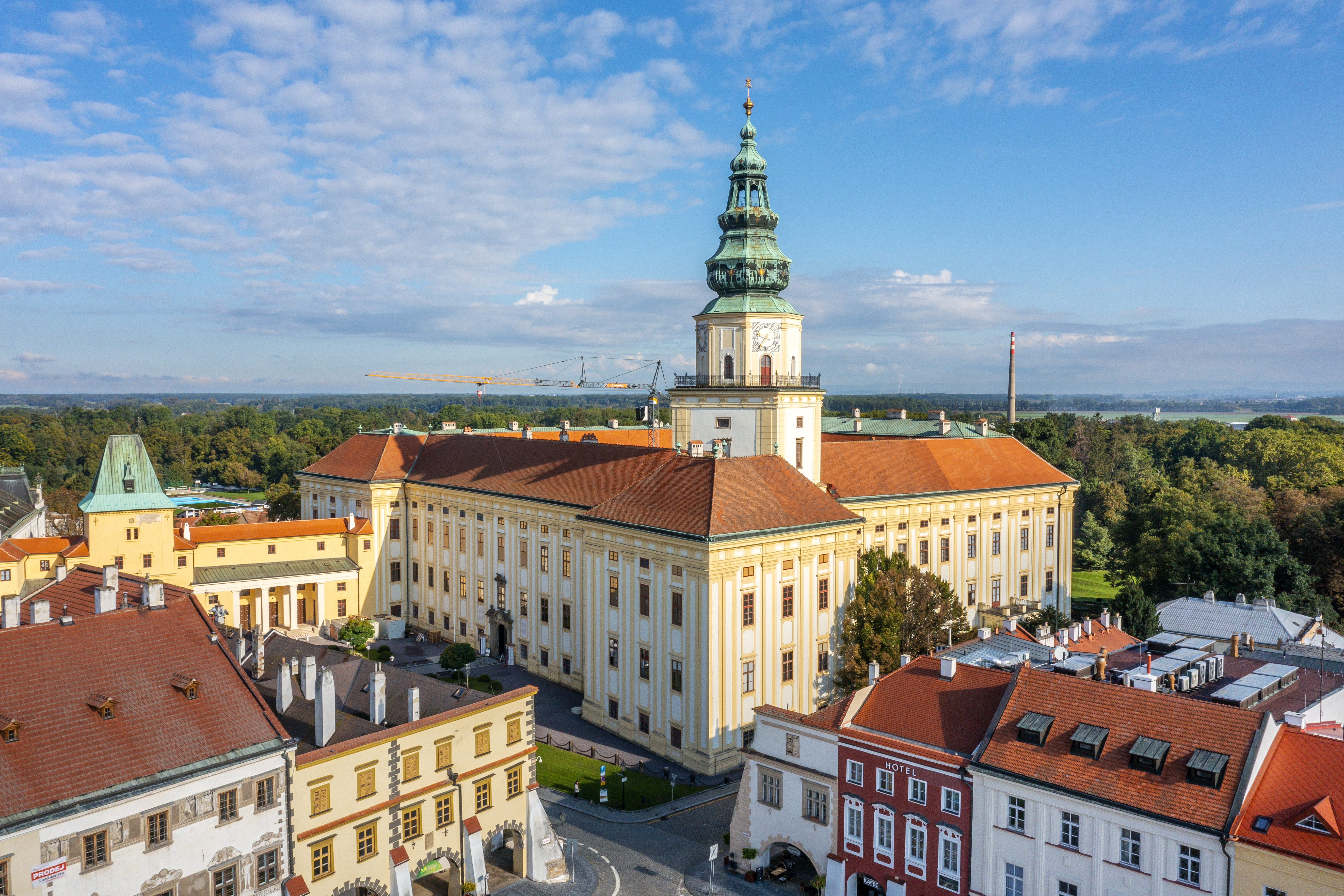
10 – Tower of the Archbishop’s Chateau
The castle tower dominates the whole city. It was destroyed three times – first time in 1643 during the siege of the city by Swedish troops, second time in 1752, when it was caught in fire as well as a large part of the castle and town, and the last time in May 1945, when it was hit by a projectile of the retreating German army. The current appearance of the Tower tower rising to a height of 84 meters dates back to 1947. The visitors can climb 206 steps to the gallery at a height of 40 meters, where they can enjoy a magical view of the city and its surroundings.
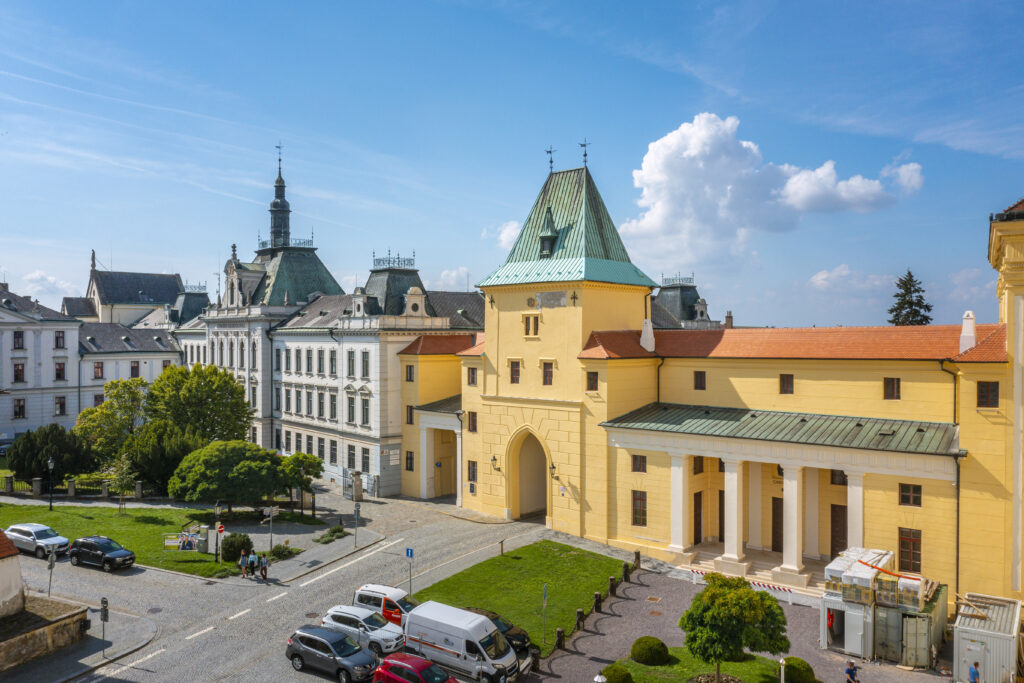
11 – Mill Gate with the Prince’s Corridor
The Mill Gate is the only one left out of the original three and also the last preserved city gate. The building of the “gardiska” – the guardhouse and the background of the bishop’s and archbishop’s guard – connects the Mill Gate to the Archbishop’s Castle. On the upper floor of the Mill Gate there is a continuous Renaissance “princely corridor”. It starts at the level of the first floor from the southwest corner of the castle, through the mentioned gate and through today’s building of the Archbishop’s High School (previously along the top of the walls) it continues to the Church of St. Moritz. The corridor allowed to walk from the castle to the church.
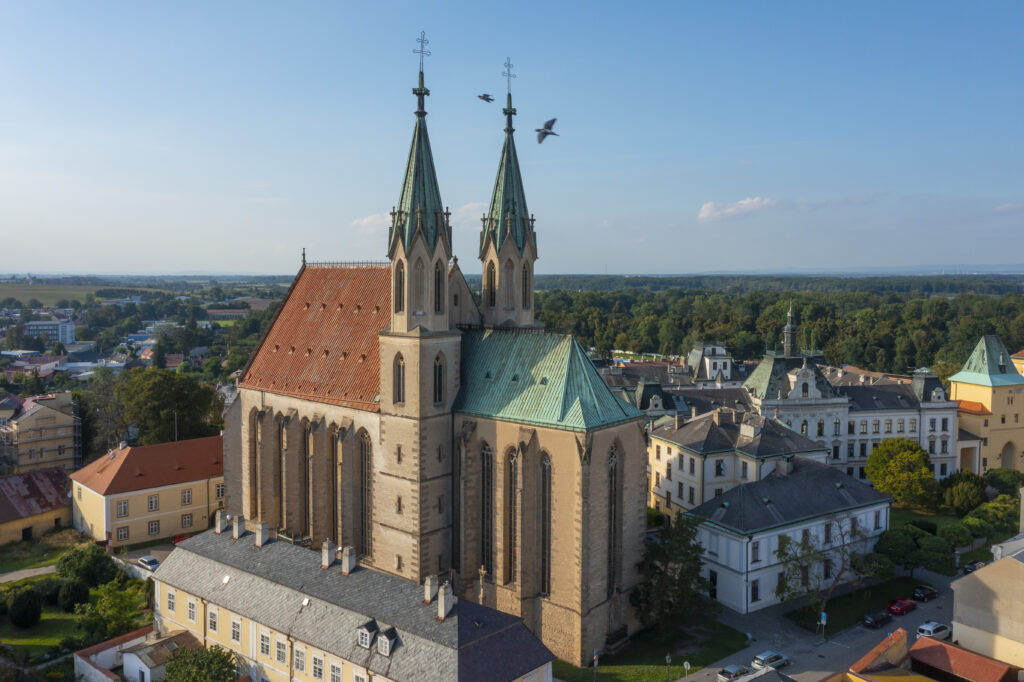
12 – Towers of the Church of St. Moritz
Towers of the Cathedral of St. Maurice display their present appearance from 1850. Until then, they were noticeably lower and ended at the height of the square base. The Neo-Gothic octagonal superstructure is the work of the archbishop’s architect Anton Arche. The completion of the towers was part of the overall adjustement and finalization of the temple in the spirit of Gothic. At the time of the works on the towers, the roof of the temple was also raised.
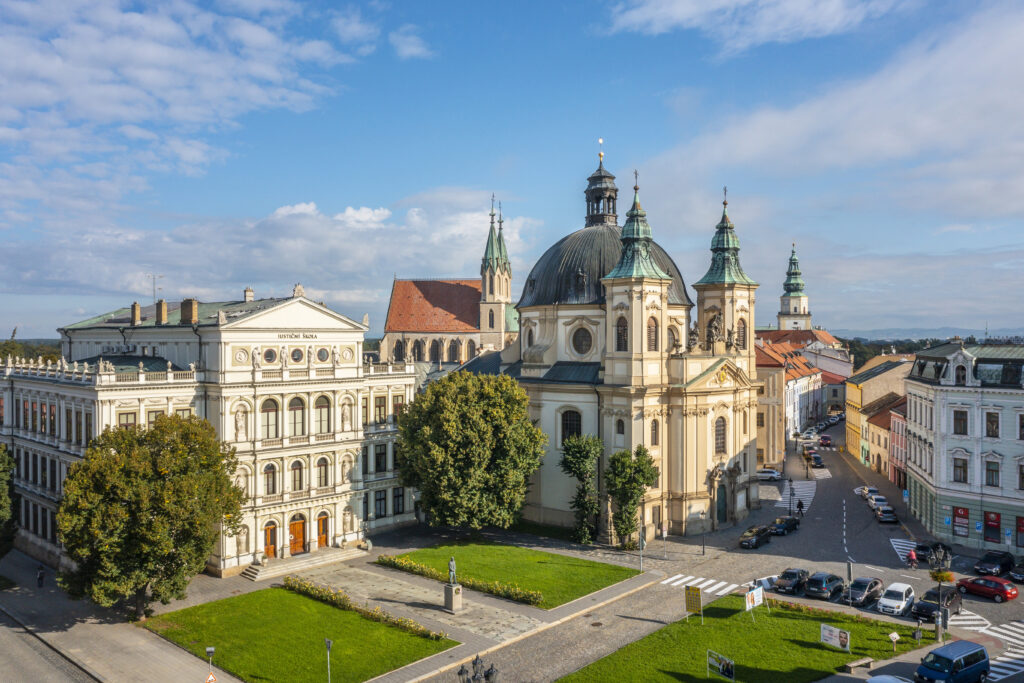
13 – Church of St. John the Baptist
It is obvious that the Church of St. John the Baptist is dedicated to the saint of the same name as the sandstone sculpture at the top of the façade depicts the baptism of Jesus. At the background of the sculptural group we can see a dome supported by a tambour (cylindrical extension). If we watch the temple from Pilařova Street, we can see only one tower and the dome, so the building resembles the Cathedral of St. Michael. St. Nicholas Church in Prague’s Lesser Town.


